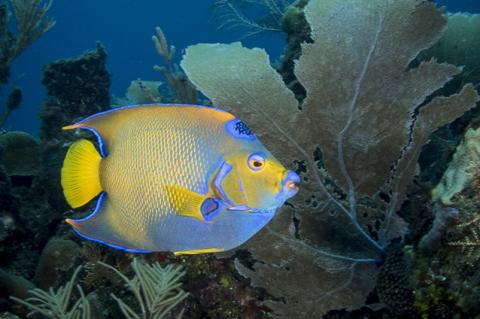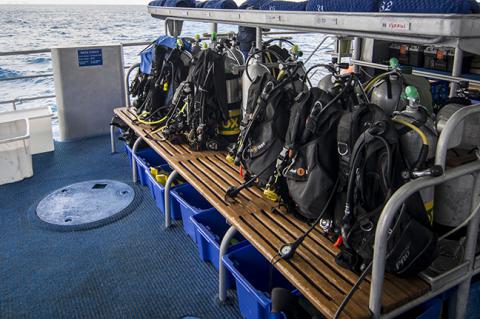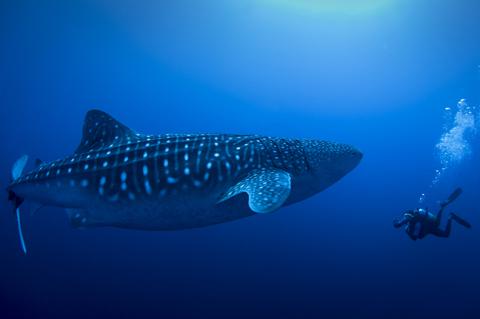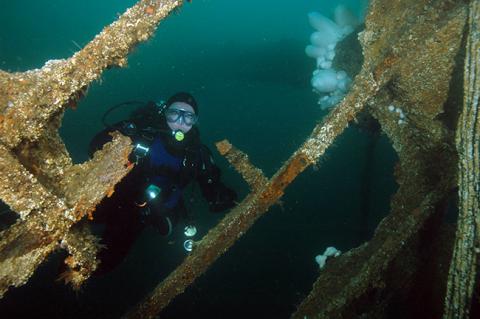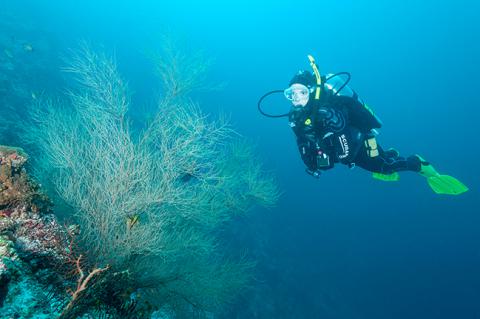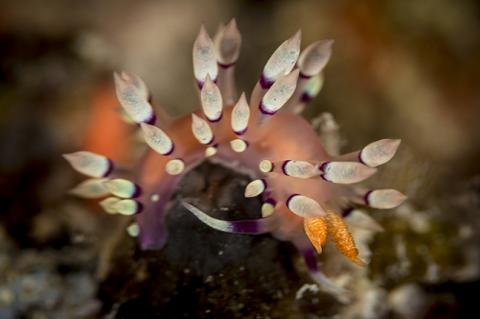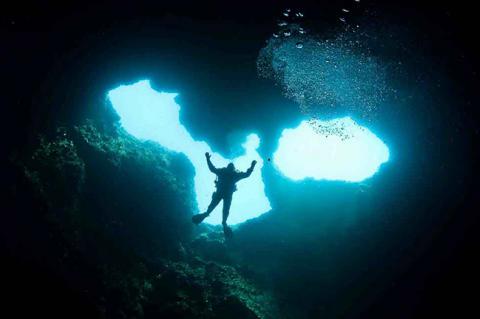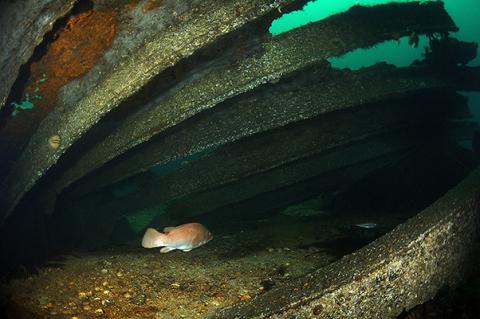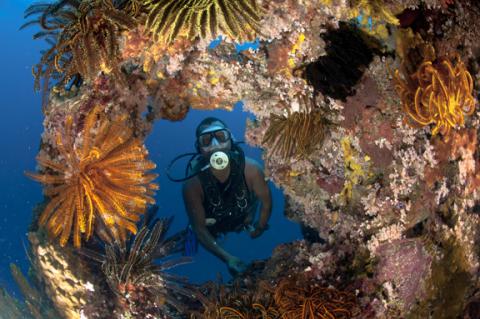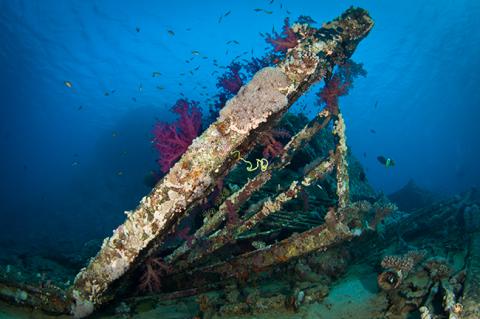Honduras: Roatán
It is 7:30 in the morning and I’m on my personal veranda on a small hill looking out over green trees and beyond them to blue water and a bright orange sun emerging from it. My feet are up on the rail and there’s a cup of coffee in my hand. I snap a photo for Instagram—#itdoesntgetanybetterthanthis. And the day’s diving hasn’t even started yet.
I am at Turquoise Bay Dive Resort and it embraces the meaning of tranquillo like no other. Sitting almost right at the center of the northern edge of Roatán, it’s a pleasure to escape the touristy hustle and bustle of the West End.

